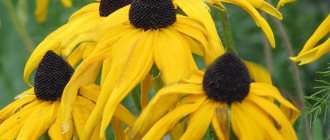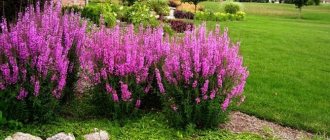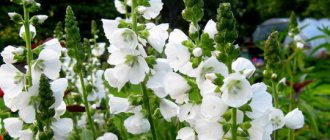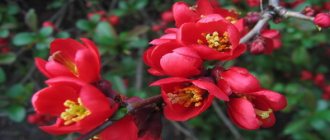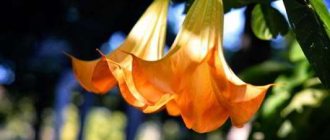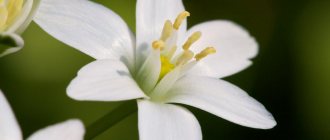Euphorbia will forgive the gardener even the greatest negligence and forgetfulness. These decorative succulents can be grown at home in pots and garden beds. They are distinguished by remarkable species variability, so it is not difficult to find a variety that will fully satisfy our aesthetic requirements. Some ornamental species grow in gardens, others are weeds. Find out how to grow perennial garden spurge - planting and care, plant propagation.
Description of the plant
There are about 2 thousand species of plants in the genus Euphorbia in the world, belonging to the Euphorbia family of the same name. The vast majority are heat-loving succulents, shrubs and trees found in Africa. But in our country you can find more than 20 wild species.
It is difficult to characterize Euphorbia and describe the botanical characteristics of the genus, because its species are diverse, some resemble meadow perennials, others resemble exotic cacti. Among them there are annual, biennial, and perennial plants. The height reaches from several tens of centimeters to 1.5 meters!
The only common feature of all species is the unusual inflorescence, which consists of a nondescript flower containing one stamen and one pistil, surrounded by colorful and beautiful leaves that are often confused with flowers. They take on shades ranging from neutral greens and yellows to reds and oranges and last for months. The humble flowers have the ability to lure winged insects.
There are some dangers to milkweed in the wild and garden that you need to be aware of. Its stems and leaves contain milky sap, a highly toxic substance previously used in folk medicine to treat warts and freckles, but it poses a serious health hazard.
Euphorbic acid, rubber and cyanogenic compounds present in the milky sap cause changes in the skin, including blisters, ulcers, and can cause temporary blindness if it gets into the eye. The result of ingestion is vomiting and diarrhea. The plant should not be within the reach of small children! Adult gardeners should wear protective gloves for any job. Be careful not to get the juice into your mouth, nose or eyes.
Attention! People who are allergic to latex should take special care when coming into contact with milkweed.
Cuttings
The perennial is propagated by cuttings or by dividing the mother plant in early or mid-spring in order to have time to separate the planting material from the plant before active growth of milkweed begins. The choice of such a time is not accidental - in this way the possibility of a stressful situation can be eliminated, in the light of which the plant could get sick or die.
Some gardeners prefer to divide perennials in early autumn to give the young crop more time to adapt and take root.
Pros and cons of the method
The advantages include the fact that the method makes it possible to preserve the varietal characteristics of the plant in its “new life”; the disadvantages are the need to take a fairly large fragment, which can adversely affect the appearance of the “donor”.
How to prepare cuttings?
Planting material is taken from the healthiest and most beautiful plant . It is better not to touch young plants, but to take cuttings from an adult perennial.
How to root a shoot?
Cuttings are carried out in several steps.
- A shoot at least five centimeters long is taken from a healthy plant. The cut area on the plant does not need to be treated.
- The cuttings can be rooted immediately or allowed to dry for 1-2 days. Rooting is done immediately in a permanent container, so as not to replant and stress the plant later.
- The soil needs to be well moistened (but do not overdo it, otherwise rotting may occur), after which the plant is covered with film or glass to create a microclimate.
- It is necessary to maintain a constant temperature of at least 20 degrees and sufficient lighting. As a rule, rooting occurs after 2-3 weeks.
Soil requirements
Euphorbia is grown in well-drained soil in full sun. Some species can grow in light shade during the day. Grown as an ornamental plant, almond milkweed (Euphorbia amygdaloides) grows in semi-shady areas.
Some species, such as Euphorbia palustri, prefer a fairly moist substrate, but most prefer dry or moderately moist, well-drained soil. M. Griffith is more demanding, requiring humus, moist, acidic soil.
These extremely tolerant plants grow well in most soil types, including dry, sandy soils. Only loamy soils are not suitable for all species. The ideal soil reaction should be slightly acidic, possibly neutral.
For milkweed in pots, it is better to purchase a special mixture of substrate for cacti and succulents.
When buying milkweed, it is better to learn about the needs of a particular species. The closer we select a planting site according to the conditions that are natural for a particular species, the better the plant will grow.
Euphorbia - photo
Just look how spectacular and different milkweed can be! Among such diversity, everyone can find their ideal variety.
Photo: flower.hozvo.ru
Photo: pinterest.com
Photo: sveklon.ru
Photo: 7dach.ru
Photo: lanshaft.com
Photo: zdorovienam.ru
Photo: klubrasteniy.ru
Photo: zelensad.com
Photo: sony-club.ru
Photo: commons.wikimedia.org
Photo: pixabay.com
Photo: marsh-svobody.ru
Photo: pixabay.com
Photo: planteset.com
Photo: tvplaneta.ru
Photo: attuale.ru
Photo: mandarin-shop.ru
Photo: million-wallpapers.ru
Photo: lanshaft.com
Photo: evrookna-mos.ru
Photo: zen.yandex.ru
Photo: zen.yandex.ru
Photo: travtravich.ru
Photo: commons.wikimedia.org
Photo: skolkogramm.ru
Did you like the post? Subscribe to our channel in Yandex.Zen, it really helps us in our development!
Landing
Most types of milkweed can be sown as seedlings in pots at home. In garden stores you can buy small seedlings that grow to impressive sizes when planted. Euphorbia is planted in open ground so that it has a lot of space around it, even if it does not look attractive at first. Euphorbia seedlings are planted in open ground when the risk of frost has passed (from mid-May). You can start growing at home at almost any time, although in winter most species go into hibernation and are best left alone.
Euphorbia tends to grow in all directions, which is not a problem; the shoots can be pruned at will at any time.
Natural habitat
Favorable for such types of milkweed as marsh, steppe, spicy and for weeds.
Euphorbia weed
It is a herbaceous annual. Its stem is quite juicy. It reaches a height of a quarter of a meter. Flowering begins in early summer and ends in autumn. The bell-shaped inflorescences are colored in shades of red. Grows in European and Asian countries.
Bolotny
This is a herbaceous perennial spurge, reaching a height of half a meter to a meter. Its stems are straight with an abundance of oblong leaves. The inflorescences resemble an umbrella. Distributed mainly in semi-deserts and temperate climates.
Euphorbia steppe
In the Russian Federation, steppe spurge can be seen on the banks of the Volga and Don, on the Caucasian slopes. In Ukraine, it grows in forest-steppe and steppe zones. Prefers limestone and chalk soils. It is a herbaceous perennial with an erect stem. Flowering lasts all summer.
Euphorbia acute
Also from the category of herbaceous plants. It blooms with small yellowish flowers. It is very tenacious and can adapt to any soil. Regenerated from the smallest root. It is extremely dangerous because it sucks out nutrients and moisture from the soil, depriving others of this advantage. It is quite difficult to eradicate it.
Next you can see the types of street milkweed in the photo:
Growing and care
Euphorbia will grow well without care. In the case of the Cypress species, its expansion should be limited. Euphorbia myrtifolia should be covered for the winter, it can freeze, and capitate prefers a more drained substrate.
Watering
Some euphorbias are succulents that can perfectly store water in their shoots. All species are drought-resistant and require relatively little moisture. Therefore, garden spurges do not need to be watered at all, but potted spurges need to be watered from spring until autumn, when the top few centimeters of the soil become quite dry.
In winter, water only when the plant seems slightly wilted.
Fertilizer
Milkweed is fertilized occasionally. You should think about them only when the lower leaves begin to noticeably turn yellow. Apply low doses of water-soluble fertilizer. As a rule, indoor plants require more nutrition than those growing in open ground; for garden milkweed, it is enough to add a handful of compost to the soil when planting.
Wintering, care in autumn
The frost resistance of milkweed varieties is very different, but perennial species, such as the well-known owner of pretty yellow flowers - Euphorbia multiflora (E. polychroma) tolerate even severe frosts well and do not require much protection for the winter. All types in the fall need to be covered with a small shelter - a layer of several centimeters; you can use spruce branches, bark, sawdust, leaves.
During winter thaws and early spring, evergreen species of milkweed should be protected from direct sunlight.
The main signs of malaria
It is impossible to give a definite description of the plants of the Euphorbia family, due to their absolute dissimilarity. The stem is usually erect, although some species have no stem at all. The leaves can be oblong, large or small, sometimes mixed with spines. Some types of milkweed are very similar to cacti and have a large number of needles instead of leaves, or, like succulents, have no foliage.
Many representatives of milkweeds do not bloom or the flowers look like tiny inflorescences surrounded by covering foliage. There are plants that bloom brightly and densely, some of them have an unusual spike-shaped inflorescence.
Reproduction
Euphorbia reproduces well on its own - new seedlings usually appear around the mother plant, which can be dug up and transplanted to the chosen location.
Propagation of milkweed by cuttings (shoots, roots) brings good results. To do this, cut off a piece of the stem or one of the shoots, place it in a peat substrate and keep it in light moisture, periodically lightly spraying water from a spray bottle. The box with cuttings must be covered with film to maintain high air humidity inside. The film must be removed and the seedlings ventilated once a day to prevent mold from appearing. When new green shoots appear and the seedlings take root, you can transplant them into a separate container.
Diseases, pests
A high level of humidity in the soil and air contributes to the development of fungal diseases in milkweed, so plants should be watered moderately, planted in ventilated places, and house plants should be planted in well-ventilated areas.
Euphorbia is resistant to most pests - few animals crave contact with its toxic milky sap or sharp leaves. Sometimes mealy bugs and spider mites are found on plants, which readily feed on the leaves, weakening them and slowly killing them. They have alarming reproduction rates, so early intervention is critical to saving the plants. The best means of combating these unwanted guests are considered to be special insecticidal preparations or aromatic oils.
Use in the garden
Euphorbias are mainly grown as indoor plants, which forgive the owner the usual forgetfulness. They look great on window sills and well-lit shelves. In the summer season, they can be taken out to the balcony or terrace, where they will create an aura of exoticism.
In the garden, milkweed grows well on rocky rocks, elevated flower beds, and ideally on sloping terrain.
Euphorbia can be combined with the following plants:
- sedums,
- girl's tansy,
- series,
- tulips,
- bush bulbina,
- mesembryanthemum.
Euphorbia myrtifolia grows well in sunny flower beds, in rock gardens, and on permeable substrate. Cypress species (Euphorbia cyparissias) and Euphorbia seguieriana (Euphorbia seguieriana) grow well in dry areas.
In general, milkweed is an ideal plant for beginning gardeners; it is easier to damage with too much care than without it. It is only important to choose a species that suits your aesthetic requirements and growing conditions, and if proper care is taken, the plant will become a wonderful addition to the garden.
Varieties that are most popular with gardeners
Indoor spurge flower - description and care
Popular flower varieties:
- Kilimanjaro. Height up to 70 cm, silver foliage with a white border. The inflorescences are small, the petals are white;
- Rock crystal is similar in appearance to the Kilimanjaro variety;
- Mountain snow. The foliage is silvery-green, the inflorescences are small and inconspicuous;
- Early snow. Height up to 70 cm. Leaves are oblong with a white border. The white flowers are small and inconspicuous in appearance;
- Climber. The stems are thick, the leaves are small. The inflorescences are spherical yellow in color;
- Obergonia De Negri. The stem is spherical and covered with thorns. Forms one large white flower;
- Albomarginata forms a lush foliage rosette;
- Dexter. The flowers are small, salmon-colored. The foliage is a rich light green color.
Mountain snow variety




